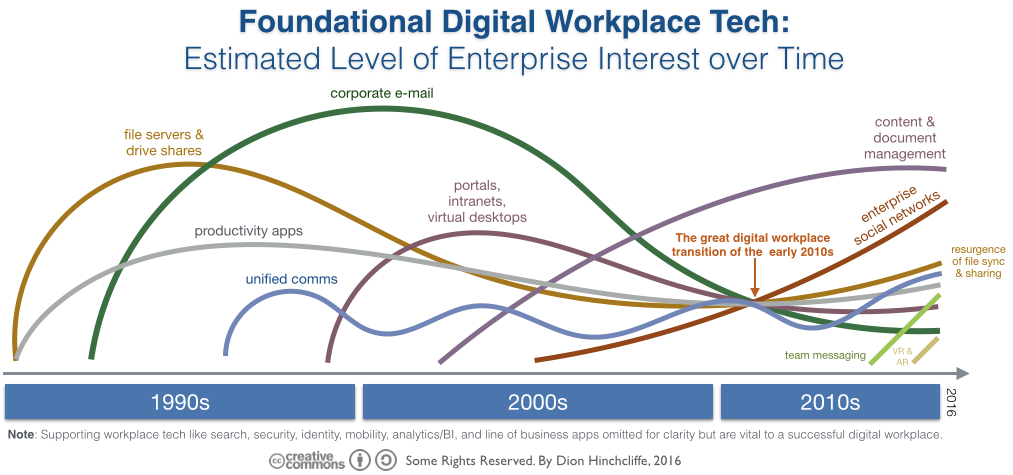- Designing for the loss of control
- Supporting social business
- Measuring the right things
As described by What's the organizing principle of today's digital workplace? | ZDNet | Dion Hinchecliffe, September, 2016
My favouritie bits
Measuring the outcome not roll out of the platform
I still find that most IT departments use pure technology adoption as the primary measure of success, rather than the business metrics or KPI improvements that actually matter. With a tech-first mindset, it’s as if merely using a digital tool is somehow equivalent to effectiveness or creating measurable value.
Remember if you roll out a new platform or application and it has 10 more steps and 3 more features and takes twice as long as the old 'manual' way then that is not an improvement. Studies have shown that a product change has to have an increase in usability, speed, usefulness of 20% or more to be a 'tangible' difference of value to the user. If you can't achieve that much of a difference over your existing product or process it may not be worth going ahead with your planned change.
Dion's awesome diagrams are worth a look
Dion has spent many years trying to illustrate digital strategy and related issues with diagrams. I really like his work.
I thought this diagram was very good.

Source: https://dionhinchcliffe.files.wordpress.com/2016/09/foundational_technology_of_the_digital_workplace.png
Social business defined:
“A social business harnesses fundamental tendencies in human behavior via emerging technology to improve strategic and tactical outcomes.”
Sounds like behavioural economics and neuroscience underpinning human behaviour is going to become more important in the design of the digital workplace. Especially so with machine learning, bots, and AI becoming more prevalent.
Designing for the loss of control
For this reason and others, I now believe any effective organizing principle for the digital workplace must be profoundly designed for loss of control and take into account highly emergent behavior and outcomes.
Organisations must be designed to adapt to loss of control and be flexible enough to deal with highly emergent behaviour and outcomes. This idea from Dion Hinchcliffe resonated with me and provided a good idea of the challenge of 'digital defenders' (i.e. conservative and incumbent pre-digital businesses and organisations)